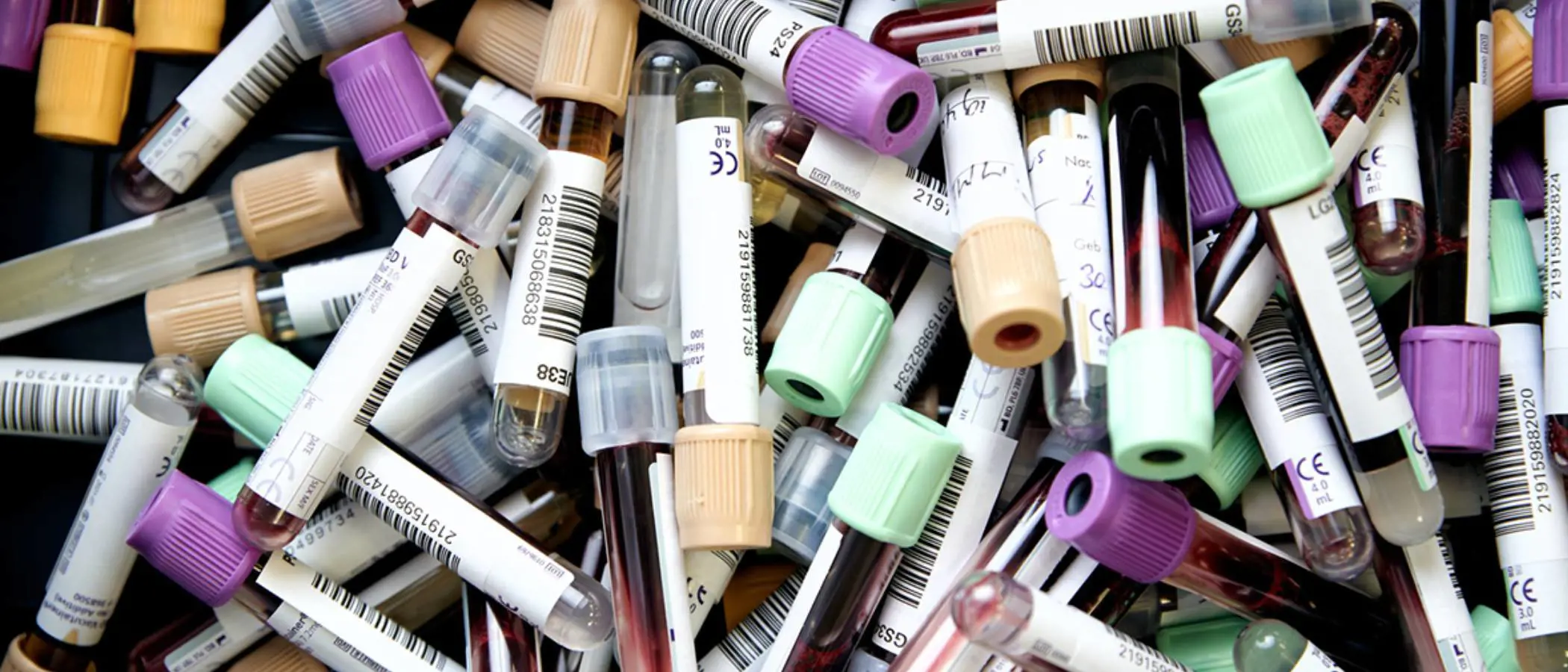By donating blood, you save lives. But the red fluid in our veins also has its limitations, and both the donation and transfusion of blood come with several challenges. Several of our portfolio companies have developed innovative solutions that can help patients with specific conditions become less dependent on donor blood.
Blood has been a powerful symbol of life for millennia. For example, it’s not a coincidence that in folk tales vampires try to continue their life after death by preying on blood from the living. On a more scientific level, blood donations have for centuries saved innumerable lives. But the medical practice really took off in the early 1900s, when human blood groups were discovered. Today, blood transfusions are considered indispensable. They are essential to ensure patients survive surgeries, cancer treatments, chronic illnesses, and traumatic injuries. The various components of blood—red cells, platelets, and plasma—are used to treat different health problems.
Limitations of donor blood and transfusions
According to the World Health Organization (WHO), blood collection centers around the world collect about 118.5 million blood donations every year. Although that may sound impressive, blood is actually always in short supply. That’s because it has a shelf life of only 42 days. To guarantee it lasts that long, it is necessary to store the fluid at a cool temperature.
Another important limitation of blood transfusions is that donor blood must match the blood type of the recipient. Donor blood also needs to be tested for diseases such as hepatitis and human immunodeficiency virus (HIV), which drive up the cost of transfusion. In many countries of the developing world, this poses grave challenges. Moreover, blood transfusions can lead to certain complications in patients, such as harmful immune reactions and infections.
All these constraints are especially problematic for patients who need regular long-term blood transfusions to treat certain medical conditions. One of the most common examples of such conditions is sickle cell disease, a group of disorders that affect hemoglobin, the molecule in red blood cells that delivers oxygen to cells throughout the body.
Novel solutions are saving lives
Although donations of human blood in general will remain indispensable for the foreseeable future, several companies have come up with specialized solutions that can help people with specific conditions become less dependent on blood transfusions. For example, the American biopharmaceutical company Vertex, amongst others, aims to develop an innovative treatment for the disease Alpha-1 Antitrypsin Deficiency (AATD). AATD can cause serious lung or liver disease and occurs in approximately 1 in 2,500 individuals.
Vertex works on a series of protein stabilisers that work on the misfolded AAT protein produced by AATD patients as the result of mutations in the associated gene. With this new medication, patients would become less dependent on blood donations to complement their misfolded AAT protein with a functional protein from healthy human donors. However promising, clinical data has been mixed as technically this is a tough challenge to master and it has taken Vertex many years to find the right molecules in another orphan disease called cystic fibrosis. However, we remain hopeful that perseverance will also pay off in AATD research as patients deserve better options.
Vertex is also active in the battle against both sickle cell disease and beta thalassemia. These diseases cause distortion of the red blood cells, which results in them sticking together and becoming less effective. Transfusions currently play an essential role in treatment. Together with the Swiss American biotech enterprise, Crispr Therapeutics, Vertex is developing a novel CRISPR/CAS9 gene editing-based solution for patients, aimed at correcting the underlying genetic cause of the disease.
The biopharma company Acceleron has developed a drug for the treatment of the Myelodysplastic (MDS) syndromes, a group of conditions characterised by the insufficient production of blood cells. MDS often precedes the development of acute myeloid leukemia or AML, a dangerous blood cancer. The drug is also used to treat beta thalassemia, a genetic condition in which patients cannot make enough beta-globin, a component of hemoglobin.
Blood innovations help the immune system get it right
Companies Alexion and Apellis Pharmaceuticals focus on innovative treatments for Paroxysmal Nocturnal Hemoglobinuria (PNH). This rare condition, mainly affecting younger adults, causes the breakdown of red blood cells by a part of the body’s own immune system known as the complement system, resulting in anemia. The symptoms of anemia, the condition in which red blood cells are unable to carry enough oxygen to tissues and organs, include fatigue, shortness of breath, and inability to exercise. The most devastating consequence of PNH is thrombosis or blood clotting, which causes premature death.
People with PNH need many transfusions of red blood cells to keep the symptoms under control. Both companies developed drugs that specifically bind to the complement system, blocking the body’s defense system from attacking the red blood cells and reducing the continuous breakdown of red blood cells, significantly improving patients’ quality of life.
Another example is the biotech company ArgenX in Belgium. ArgenX is developing a promising solution for the treatment of myasthenia gravis, a severe muscle disease caused by autoimmune antibodies that block or even destroy the neurotransmitter receptor, a specific kind of protein that muscles need to receive in order to act. The disease is currently treated with Intravenous Immunoglobulin Therapy (IVIg), for which immunoglobulin is filtered from donor blood. ArgenX’s solution is an antibody fragment that blocks the so-called neonatal Fc receptor, so that autoimmune antibodies are not ‘recycled’ and are excreted faster.
These and other life-saving innovations are the result of hard work by dedicated researchers and biotech-entrepreneurs. We continue to offer access to some of the most exciting medical innovations through our healthcare strategy, which is based on an investment process which has evolved over the past 20 years.
